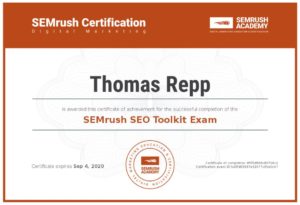 When it comes to developing an effective SEO strategy for a mid-size B2B industrial company, there are several key considerations. Here are some important steps to follow that have worked well over the years:
When it comes to developing an effective SEO strategy for a mid-size B2B industrial company, there are several key considerations. Here are some important steps to follow that have worked well over the years:
Before we get into the tried and true steps outlined below, it is important to note that the mid-size B2B industrial market (10 million to 1 billion in sales) is extremely underserved and not very competitive from an SEO standpoint. The majority of B2B industrials have an extremely low brand visibility percentage... 0% to 10%. Meaning most of their keywords are not in Google's top 100 search results. This provides a savvy industrial marketer a wide and easy path to online success.
For example, a typical B2B, with proper SEO skills could elevate 30 to 40 (out of 100) of their most important keywords and topics to the top 3 positions in Google in less than 3 months. Imagine what that does for your online traffic, brand visibility and lead generation.
With that said, here are the basics:
Keyword Research: Start by conducting thorough keyword research to identify relevant terms and phrases that your target audience is likely to search for. Focus on long-tail keywords specific to your industry niche, products, and services. Use tools like SEMrush, or Ahrefs to discover keyword opportunities. These tools can be very intimidating for the beginner, but they offer amazing insights into your industrial buyers' behavior.
On-Page Optimization: Optimize your website's pages to align with the identified keywords. This includes optimizing title tags, meta descriptions, headers, and content. Ensure that your website provides valuable and informative content that addresses the needs and pain points of your target audience. Once you insert your company’s critical topics and keywords in your SEO tools, they will be highly effective at providing the topics that generate the most traffic and leads.
Technical SEO: Pay attention to the technical aspects of your website to improve its performance and search engine crawlability. Ensure your site has a clean and logical URL structure, proper internal linking, XML sitemap, robots.txt file, and fast loading speed. Also, make sure your website is mobile-friendly and optimized for mobile devices.
Content Creation: Develop a content strategy that focuses on creating high-quality, informative, and engaging content. This can include blog posts, case studies, whitepapers, videos, and infographics. Aim to become a thought leader in your industry by providing valuable insights and solutions. One of best formula's for content success is to adapt Marcus Sheridan's concept of "The Ask, You Answer"?
Local SEO: If your B2B industrial company serves a specific geographic area, optimize your website for local SEO. Create a Google My Business profile, ensure consistent NAP (name, address, phone number) information across directories, and encourage customer reviews. I am amazed at how few business do not take advantage of this element of SEO. If your business is a regional supplier, it is critical you pay attention to “local SEO” tactics. In my latest ebook I detail, in step # eight, what it takes to improve your “local SEO”.
Social Media and Online Presence: Establish a strong presence on relevant social media platforms and engage with your target audience. Share your content, industry news, and updates to generate interest and increase visibility. Participate in industry forums, online communities, and discussion groups to build credibility and attract potential customers. For the mid-size B2B market & in my latest book, I recommend just getting good at Linkedin. Don’t worry about the others for now.
Analytics and Monitoring: Regularly monitor your SEO efforts using tools like Google Analytics and Google Search Console. Better yet, get an account with SEMrush. SEO tools like SEMrush provide a much better picture of what your B2B competitors are doing. SEO tools help you track key metrics such as organic traffic, keyword rankings, bounce rates, and conversion rates … including your competitions. Analyze the data to identify areas of improvement and adjust your strategy accordingly.
Link Building: Build a strong backlink profile by acquiring high-quality links from authoritative websites in your industry. Seek opportunities for guest posting, industry collaborations, and getting mentioned in relevant directories. Focus on earning natural and organic links rather than resorting to black-hat techniques. I will say that because the mid-size industrial market is not that competitive for top spots on Google, Link Building can be at the bottom of your to-do lists. Link building can be a huge time drain. Focus on the other tasks outlined above....
Remember that SEO is an ongoing process, and results may take time. It's important to stay up to date with industry trends, algorithm changes, and best practices to ensure the long-term success of your SEO strategy. Patience is the key to success in SEO.
Need more detail? Need outside help? Download the FREE ebook below that outlines proven steps with proven case studies on the best way to get your B2B industrial to the top off Google...The very foundation for all your online marketing activities moving forward.
Author:Tom Repp
A passionate marketer attempting to change the way industrial marketers leverage the web as a growth-oriented, lead generation machine. View all posts by Tom Repp





